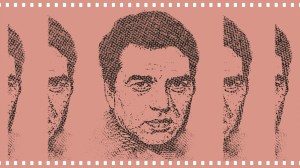Mind the negativism, please
Many years ago one of Delhi’s most endearing and enduring politicians, the late Jagpravesh Chandra, presented me his book on why the Ca...

Many years ago one of Delhi’s most endearing and enduring politicians, the late Jagpravesh Chandra, presented me his book on why the Capital badly needed a mass rapid transport system. ‘‘Your daughters will remember me with gratitude when Delhi finally gets its metro’’ Chandra had inscribed on the first page. Chandra’s vision became a reality much sooner than he imagined. It was not my children’s generation but mine that has witnessed the city’s public transport system revolutionised.
Chandra, who headed the Delhi Government back in the eighties, spoke out on his favourite topic at every forum, from Lions and Rotary clubs to kirana and paper merchants associations. We thought Chandra was kite-flying, just as we made fun of his experiment of fitting an LPG cylinder onto his Ambassador car to fight air pollution.
Thirty years ago, the concept of a metro seemed far-fetched in a city whose public transport was decades behind that of metropolises like Mumbai, Bangalore and Kolkata. The dilapidated Delhi buses were so overcrowded that a major hurdle on any journey was making your way from the entry point to the exit of the bus, since you had to squeeze through a sweaty mass of unyielding humanity. Bus timings were arbitrary. Drivers halted their vehicles only when they chose to, mostly in the middle of the road.
Conductors and passengers were equally untutored in the code of civilised commuting. Nobody believed in queues. Some passengers even turned aggressive if they were asked to buy a ticket. If a girl wore a skirt or trousers it was assumed she was asking to be teased. Introducing private buses on some routes hardly helped. The reckless drivers of the Red Line buses were responsible for so many accidents that the killer Red Line was re-christened Blue Line, without a noticeable improvement in the mishap rate.
A journey from South Delhi to Old Delhi was a cumbersome affair if you did not possess your own vehicle. You caught a bus, then you jumped onto the four-seater shuttle, called phut phut, which plied between New Delhi and the walled city and finally you hired a cycle rickshaw for the last lap. Pushing, shoving and haggling was essential to get to your destination.
Which is why my amazement bordered on awe when I discovered recently that I can now go from the Central Secretariat in Lutyens New Delhi to Chawri Bazaar in the heart of the old city in ten minutes flat by the metro. The marble and glass interior of the spanking clean Chawri bazaar metro station with three flights of escalators seems surreal, particularly when you exit and find yourself in the middle of the congested lanes of the city’s main paper market with rickshaws, hand carts and tempos trying to out race each other. Two different time spans within minutes.
The pristine appearance of the air-conditioned Delhi metro stations and trains is stunning. No paan stains, no cigarette butts, no graffiti, not a hawker or squatter in sight. A notice warns of a fine of Rs 50 for any vandalism, Rs 500 for bad behaviour and drunkenness and Rs 5000 for carrying hazardous substances. To my bedazzled eyes, even the London tube seems dingy and antiquated compared to our state of the art, light and airy metro. Electronic signs announce each station. Electronic ticket tokens and smart cards are so user-friendly that you can forget the usual fears that your tickets will get chewed up when you put it into the slot or that the exit gate will not open. On the train, over the intercom a woman’s voice adds a courteous ‘‘please’’ to the statutory warning of ‘‘mind the gap.’’
One of the many miracles of the metro is that it has brought varied sections of society together under one roof, something that seldom happens in highly stratified Delhi where the snooty and sophisticated South Delhi residents feel they have little in common with those living in old Delhi. On the metro, West Delhi residents, mostly Punjabis and descendants of Partition refugees, rub shoulders with the city’s newest migrants, the Purabis, settled in East Delhi. Over time, the metro will play a large role in breaking down barriers between the city’s diverse populations.
Feasibility reports on setting up a metro in the city were commissioned as far back as the fifties, but nothing ever came of the numerous studies. Even after the Delhi Metro Rail Corporation (DMRC), funded equally by the central government and the Delhi government, was finally constituted in 1995, there continued to be many sceptics, including myself. But things have moved with such speed that the project is actually 33 months ahead of schedule. It has come up so unobtrusively that Delhi residents were taken aback when they learnt that the metro had reached their neighbourhood.
Last week, phase one of the metro was almost complete. The three different train lines cover 56 kilometres with some 50 stations. The metro line stretches from Dwarka to Barakhambha Road, from Rohini to Shahdara and from Delhi University to Central Secretariat. It is a shining example of 21st century India. Proof that we should now think of dispensing with our usual negativism. (‘‘We Indians are like that only’’, ‘‘What better do you expect, after all this is Bharat’’). The Delhi metro has shown we can meet the best international standards if the government has the determination to deliver and appoints inspired leaders like DMRC chief E. Sreedharan to show the way.
- 01
- 02
- 03
- 04
- 05































